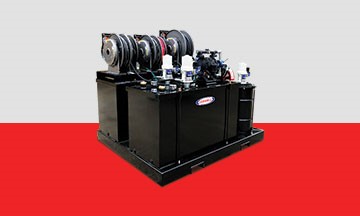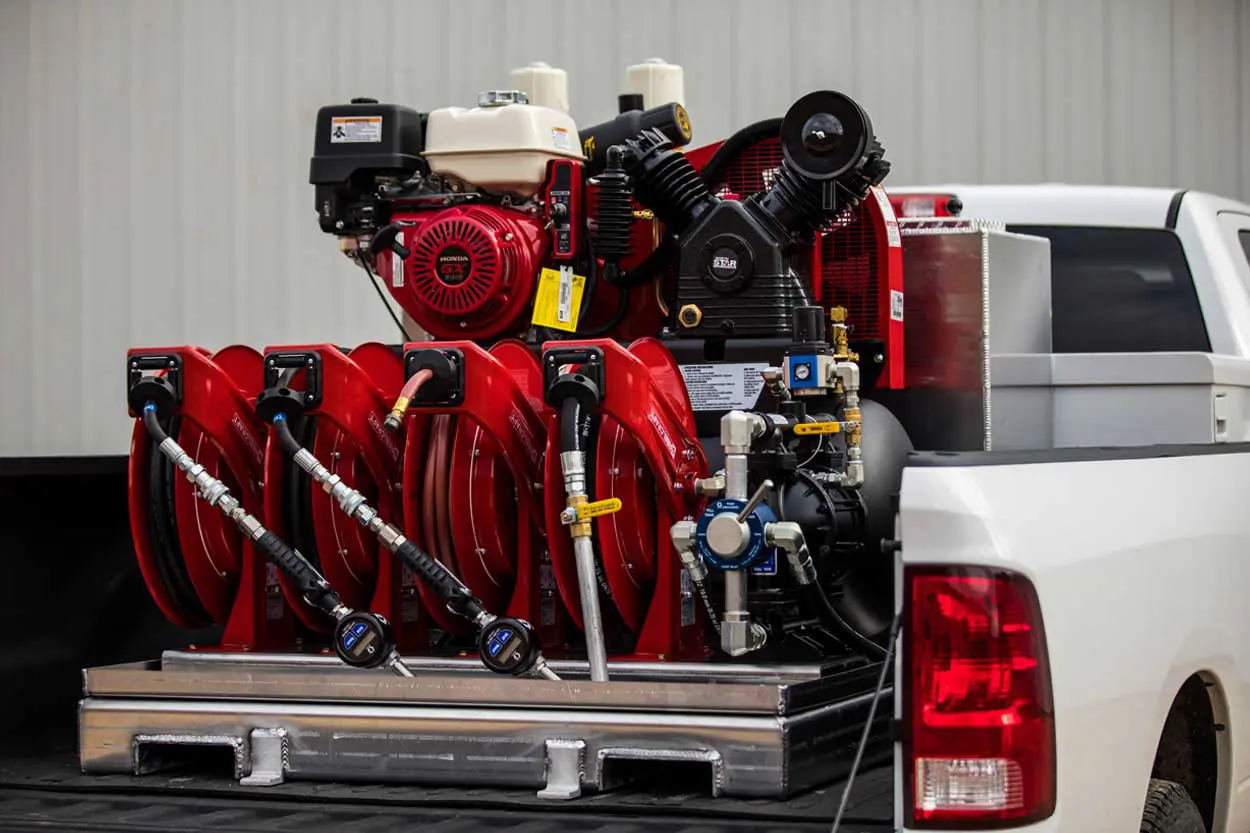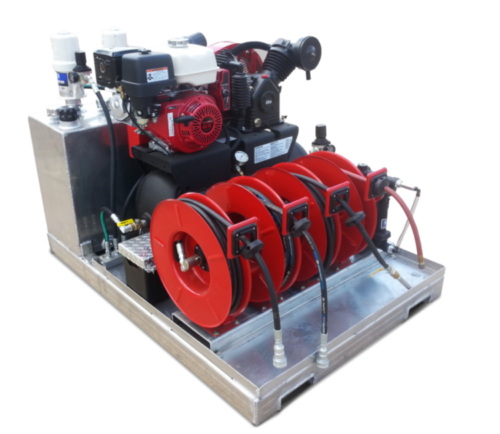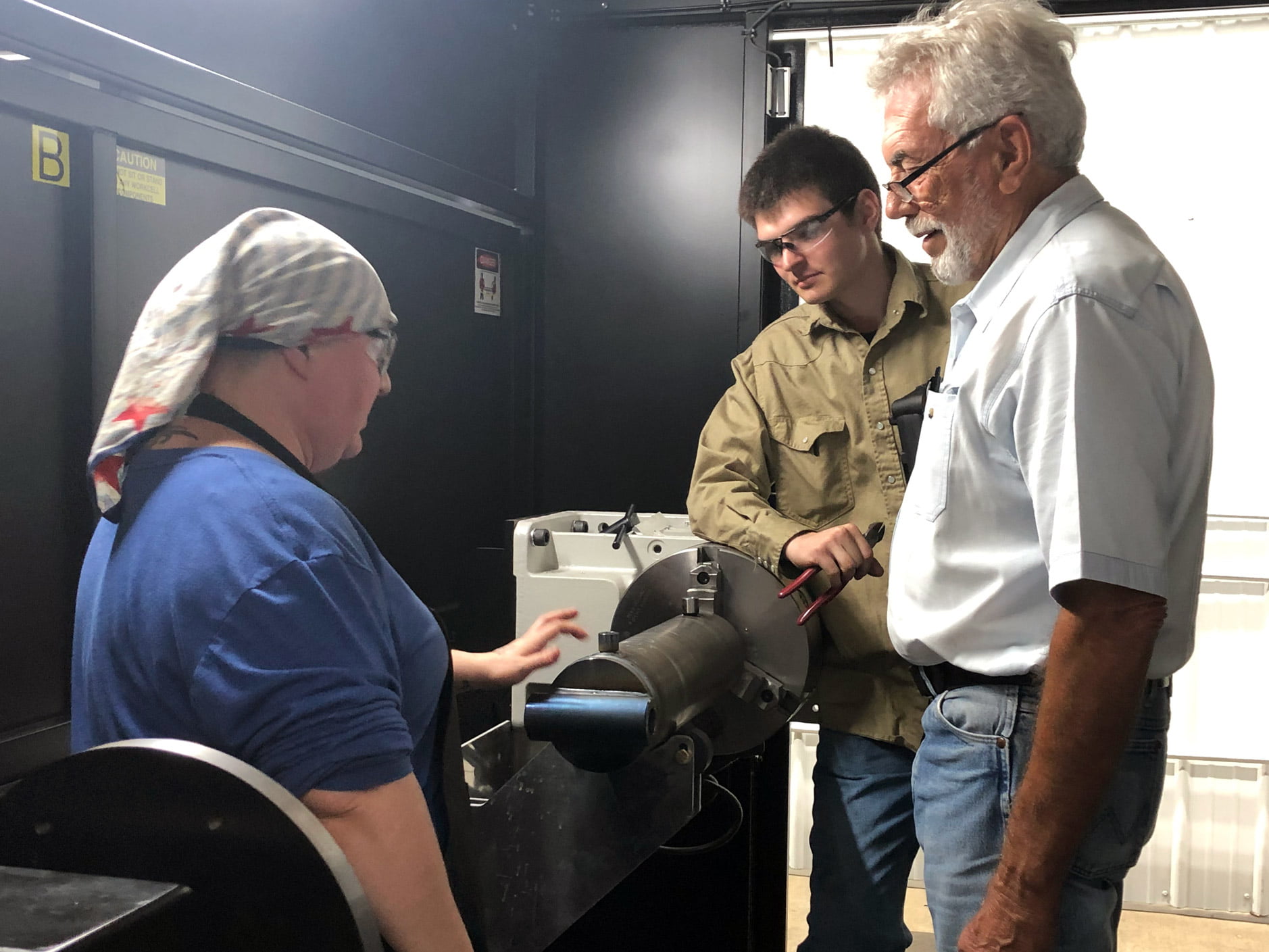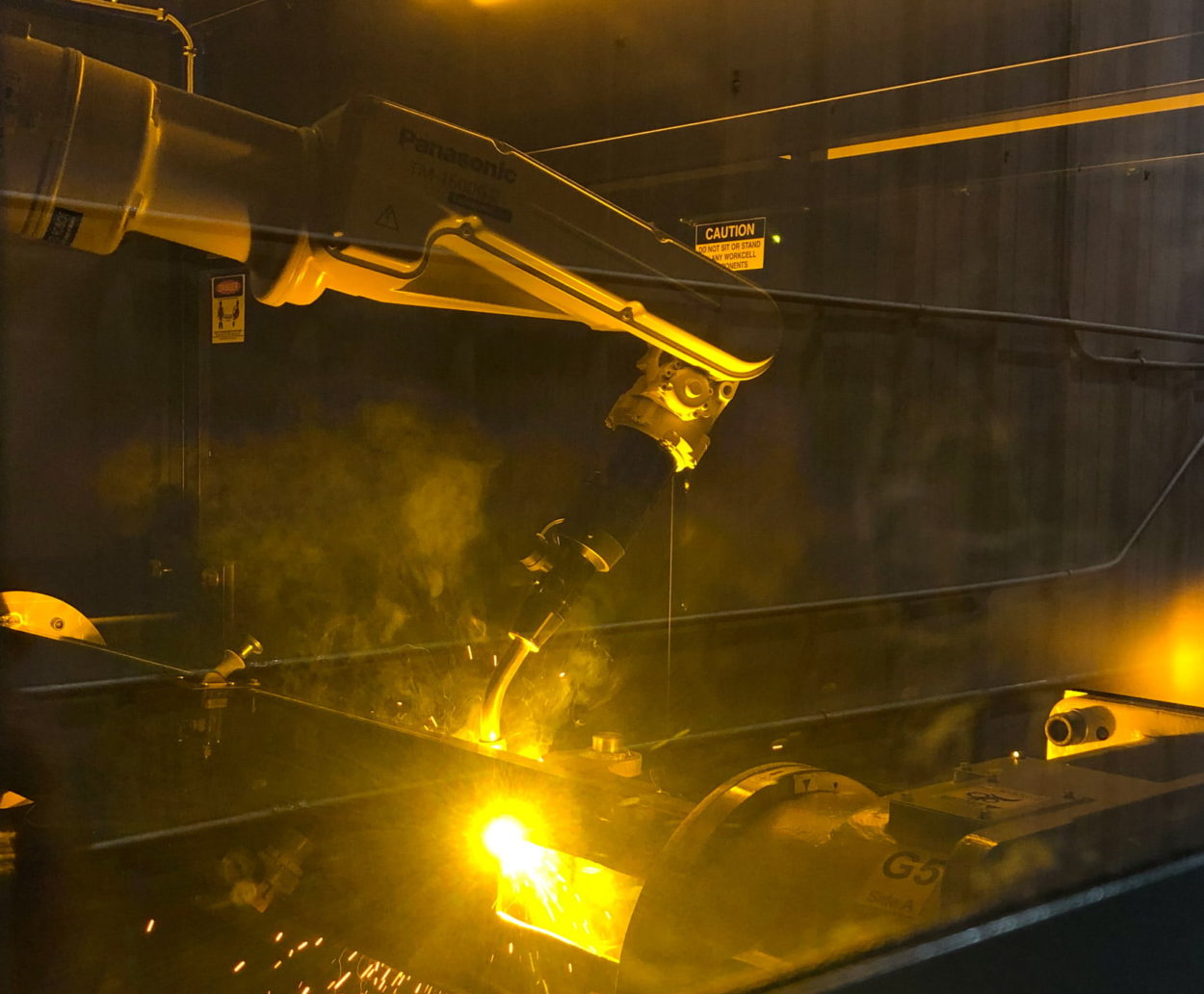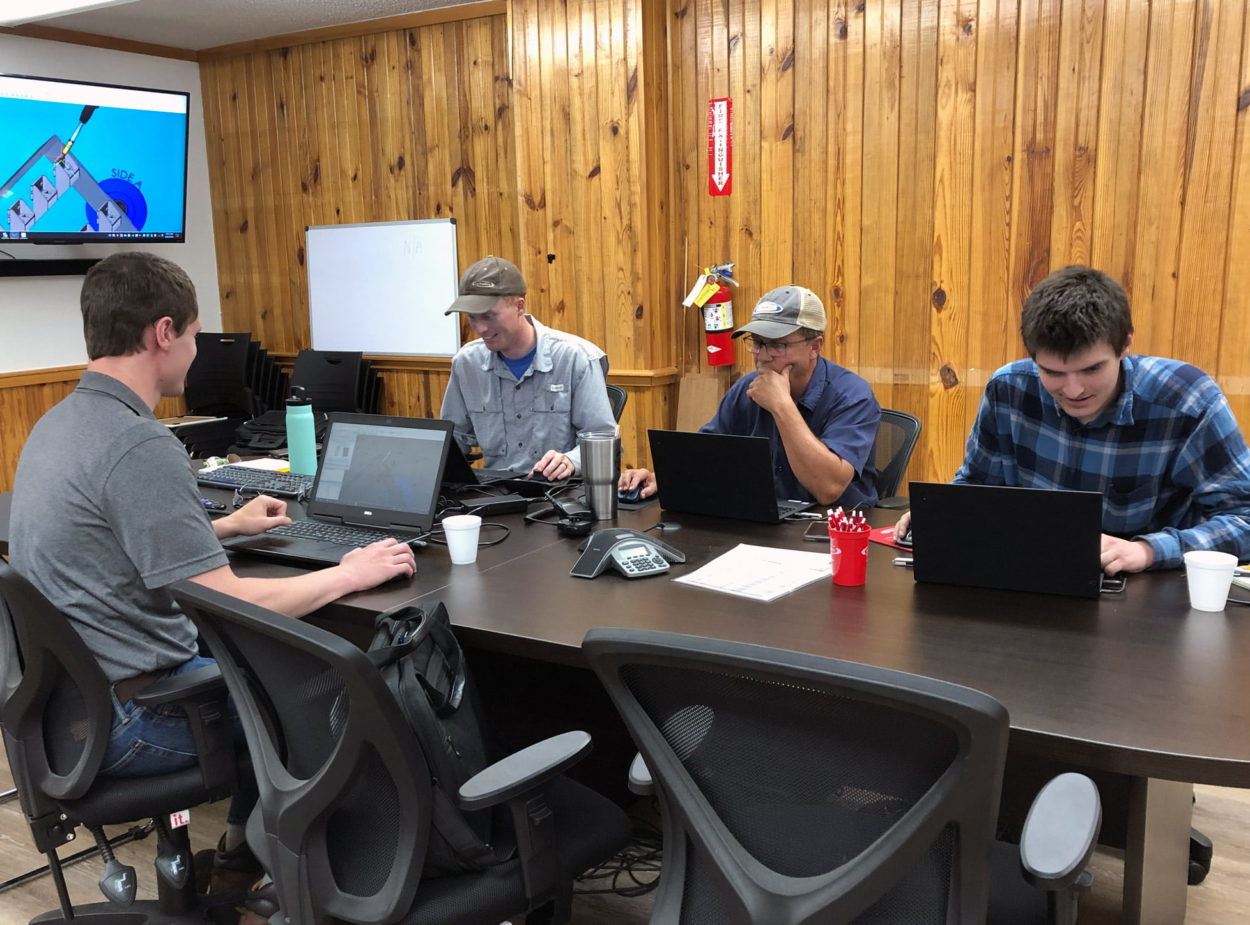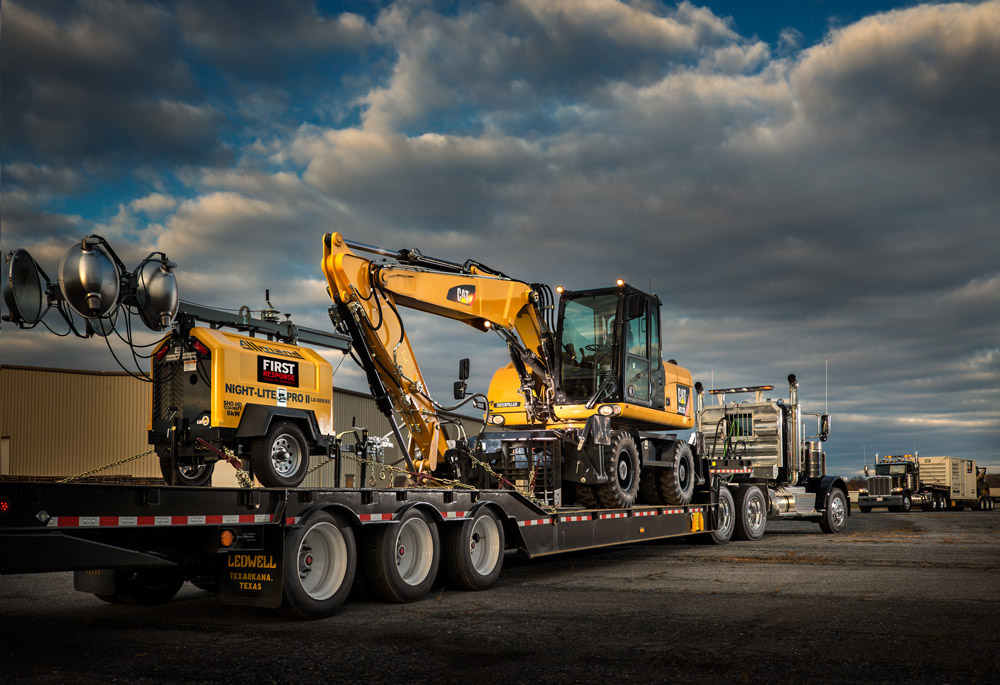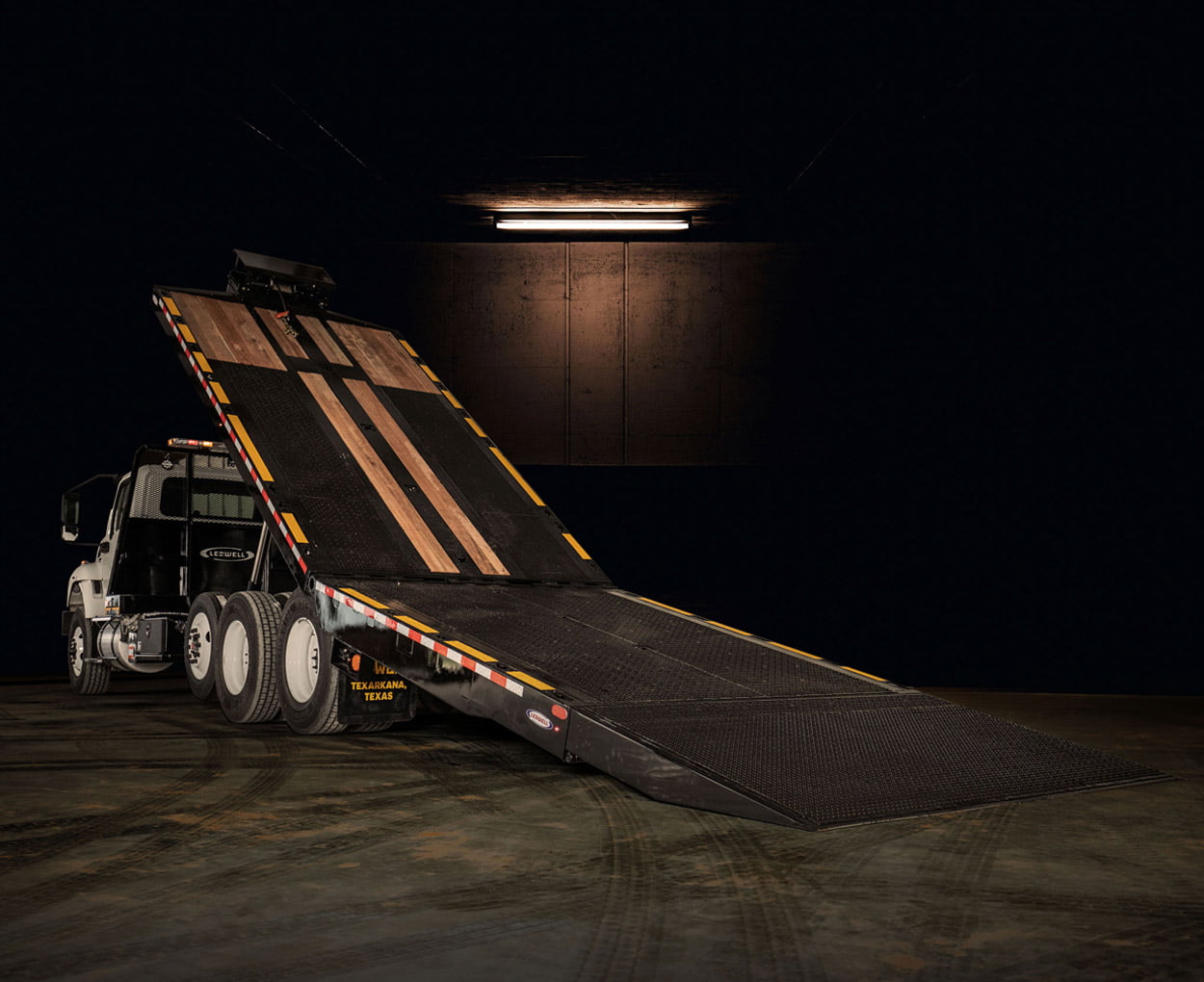

What do you get when you take a HydraTail Truck and add a unified hinge and hydraulic tilt deck? Ledwell’s groundbreaking, patent-pending HydraTilt Truck
“We saw an opportunity to create a more versatile truck. One that takes up less space on the street, accommodates low ground clearance equipment, has a shorter bed height, and has a deck that tilts high enough to unload containers.”
“We’ve had a lot of success in the rental industry with our HydraTail truck, but even those customers were having trouble with getting some of their lower ground clearance equipment over the tail and hinge easily,” said Ledwell engineer Gary Gathright.
The truck’s innovative design centers around what the Ledwell team calls a unified hinge.
“When you hinge the deck and tail off of the same piece, when they’re parallel with each other, there’s no step-down like you’d get with two hinges,” he said. “It’s an easier loading situation, and you can more easily slide things off, like a container or non-powered equipment.”
Gary said the HydraTilt Truck can be positioned to result in a loading configuration similar to the rollback, but it’s 5 3/4 inches lower in transport mode.
“That makes it easier on the drivers loading the equipment and creates a lower center of gravity, so you have a more stable platform when you’re driving,” he said. “And you can haul larger equipment.”
The HydraTilt Truck’s smaller loading and unloading space makes it an asset in urban areas.
“When you’re on a crowded downtown street, you want to take up as little room as possible as you load and unload,” Gary said. “It makes for a safer environment for the driver unloading the equipment, and it’s safer for the public in general because you’re not taking up multiple driveways or blocking the street.”
The Ledwell team ultimately designed the HydraTilt Truck to make customers’ lives easier.
“This is simply an extension of what we have done for nearly 75 years, which is to take feedback from our customers and create the equipment they need,” he said.

